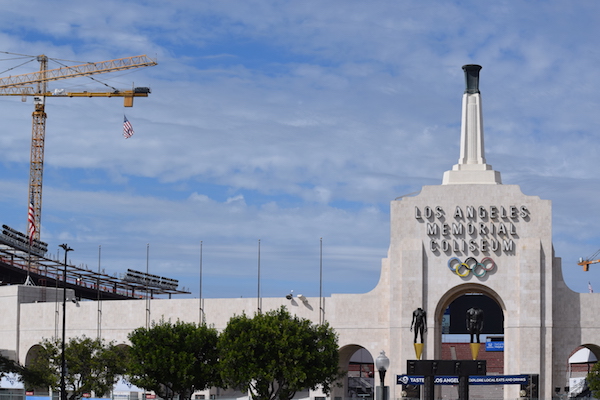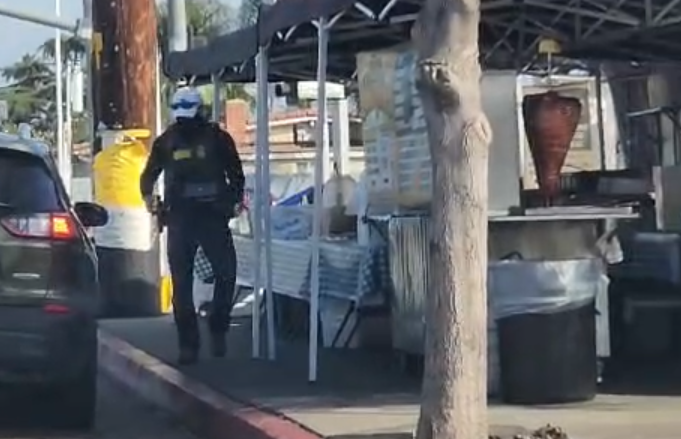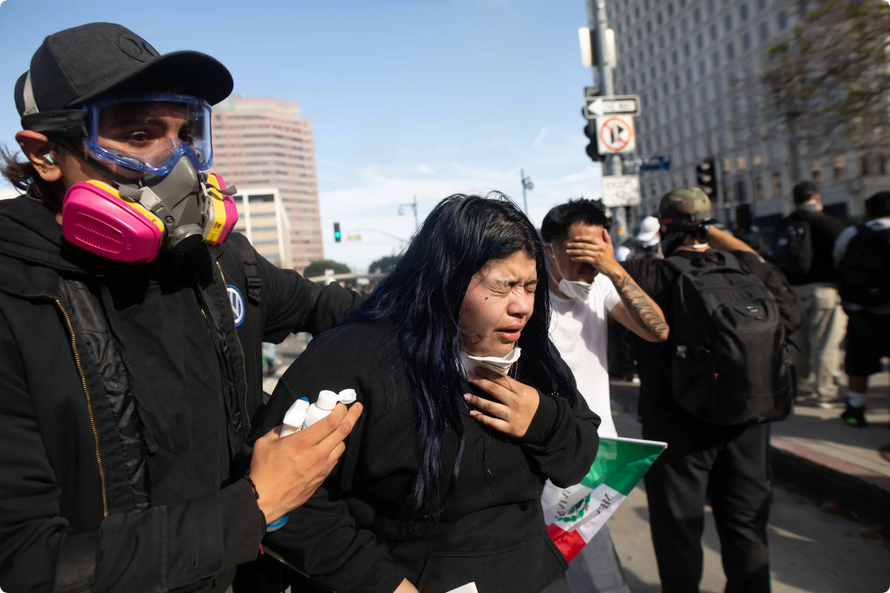[dropcap size=big]F[/dropcap]or 30 years, Elyse Valenzuela has lived with her mother and three siblings in a rent-stabilized apartment across the street from the Los Angeles Memorial Coliseum and the new Banc of California Stadium — close enough to hear the roar of the crowd on game days.
But these days Valenzuela and her family have little to cheer about. Their home and seven other buildings along Flower Drive are set to be torn down to make room for a multi-use residential and commercial complex by Irvine-based Ventus Group, which acquired the property in 2015.
The project, called The Fig, is part of a surge in gentrification in an area that had once been one of the most affordable in Los Angeles.
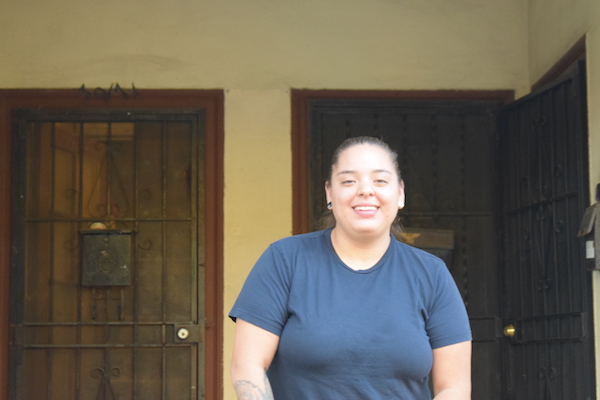
The project will take up around 4.4 acres right opposite the Banc of California Stadium. It will be comprised of a hotel, student housing units, and a mixed-income housing component. It will also have spaces for offices, retail, and restaurants.
The longtime tenants and residents will simply be displaced.
“There is a clear and articulated law governing rental stabilized housing in the City of Los Angeles. We will be 100 percent compliant with that law and have begun the process of talking to our tenants,” Alice Walton, a spokesperson for Ventus Group, told L.A. Taco.
The affected area is part of the 9th L.A. City Council District, represented by Curren Price Jr., who also served on an ad-hoc committee for Los Angeles’s initial bid to host the 2024 Olympic games. In April, Price introduced a motion in support of The Fig, stating that his district requires additional hotel rooms to support the growing demands of tourism and that the city should explore options to provide financial assistance to the developers of the project.
The motion was approved by the council two months later. Currently, the city and the developers are awaiting a report on how best to incentivize the project.
“Construction will begin as soon as the project receives the necessary entitlements from the city. We expect that will be some time in 2019. The project is expected to be completed in 2021,” Walton said.
RELATED: Support Stories Like This & Become a Member of L.A. Taco Today!

[dropcap size=big]A[/dropcap]bout 70 residents, mostly belonging to low-income long-term residents, face likely eviction. The uncertainty regarding an start-date for construction has heightened anxiety among them. Neighbors pass along rumors that demolition are imminent, Valenzuela said. Few want to speak to the press.
While Councilmember Price did not respond to multiple requests for comment, previously he has said that the city is trying to balance the need for hotel rooms and more affordable housing.
A non-profit organization called Strategic Actions for a Just Economy (SAJE) is helping tenants with legal issues related to The Fig. Many of the residents are elderly and on fixed incomes, some self-identify as disabled and some are as young as five, according to Maria Ochoa, one of the organization's community organizers.
South Central Los Angeles is gradually becoming an entertainment center and the area around Exposition Park, a gateway to the tourist destinations around Los Angeles, Ochoa told L.A. Taco. Gentrification, she said, is making the area more attractive to affluent residents while driving out working-class families who have lived in the area for decades.
“They’re going to think, ‘Jeez! I really found a wonderful place to stay!’ without realizing that they’re taking away the opportunity for rent-controlled housing to hundreds of people,” she said. “There are multiple developments coming up on Figueroa Street. We believe that the [Figueroa] Corridor is going to change vastly within the next 10 years.”
RELATED: Anatomy of a Rent Strike ~ L.A. Taco Investigates
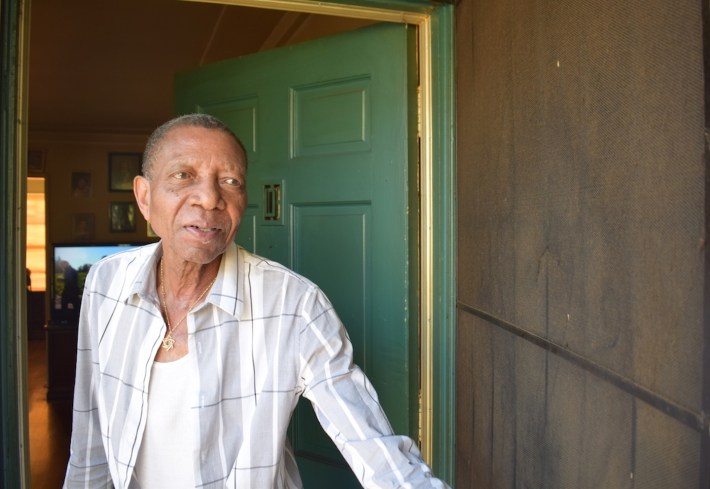
The predicament of the residents of Flower Drive is shared by many others living around Exposition Park and the University of Southern California.
Henry Prince grew up in Louisiana and worked as a truck driver for UPS most of his life. Today he is 79-years-old and has four daughters and a son. He takes great pride in the fact that all of them are educated and are now working. He moved to Los Angeles in the 1960s and has been living in one of the rent-controlled apartments in the 3900 block of Flower Drive since the early 1980s.
Prince likes his neighborhood although he said he often did not get along with some of his neighbors. He is especially appreciative of there being “no drugs, no crime” on that street. He heard of The Fig development project only about a month ago.
“It don’t bother me. I’m gonna move to some other place,” he said, adding that he gets a decent retirement fund and can afford to move. At the same time, he knows that not all of his neighbors are in a position — financial or otherwise — to look for and move into a new home.
“Some people [here] are struggling. I am not and I thank God for it because I did struggle once,” he said. Prince’s view is shared by Valenzuela.
“Luckily for us in our situation we have people that are willing to open their doors for us. But I know that the rest of the tenants here ... their situation is not as good as ours. Some tenants, they don’t have other family members. They’re retired. They get a $500 paycheck every two weeks. How can they afford to go pay $2500 rent?” Valenzuela asked.
RELATED: Highland Park Rent-Strike at the Avenue 64 Apartments: ‘We Have No Other Place to Go’
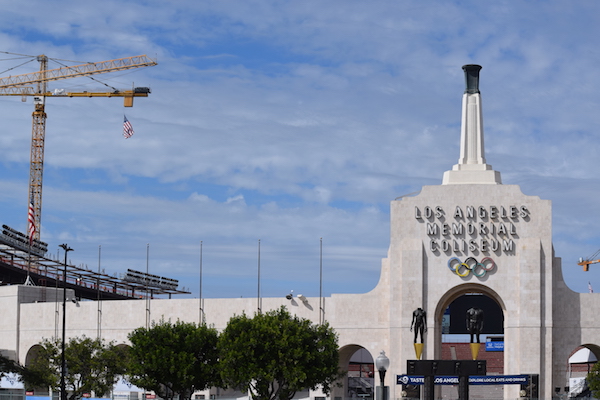
When the university converted the old University Village into the new USC Village, the small business owners were replaced by shopping giants like Target, Trader Joe’s, Abercrombie & Fitch, and gourmet food outlets like Dulce, Kobunga, and Cava.
The district has among the highest unemployment rates in the city (8.5 percent unemployed). More than a quarter of the households are also enrolled in the Supplemental Nutritional Assistance Program, or food stamps — the highest in the city.
However, with a rise in demand for student housing, the area has seen an increase in rents. According to real estate website Zumper, the median rent for one bedroom in the area has jumped from $1,175 in fall 2015 to $1,530 this summer.
The average monthly rent for the units was $784, she said.
In an area where the median household income is a little more than $30,000, the university’s growing international cohort also show a willingness to pay more — a fact developers and property owners wish to cash in on. Last month, for instance, around 80 tenants at an apartment complex off Exposition Boulevard were evicted because the new owners plan to convert the units into student housing.
The reporting for this story was completed as coursework in the Journalism M.S. Program at the USC Annenberg School for Communication and Journalism.
